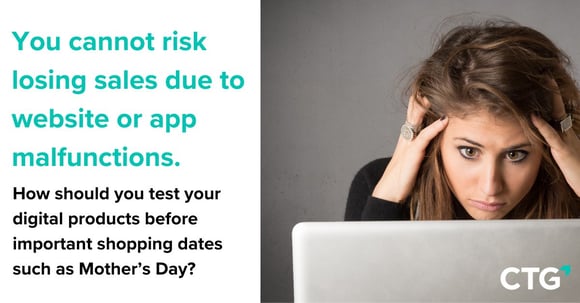As retailers rush to build an omnichannel experience, implementing a multi-device testing strategy is key to ensuring the quality of their digital touch points.
73% of consumers now go through several channels before making a purchase, and nearly a third now use more than 3 distinct channels. Mobile application, website, but also in-store. To ensure that the user experience is up to par with this mode of consumption, it is essential to build a multi-device testing strategy.
What is an omnichannel strategy?
The term omnichannel describes the synchronization of online and offline channels to provide a consistent and integrated customer experience. Omnichannel strategy is designed to meet to the way people shop today. For example, customers may begin their journey by looking at a product online via a mobile website. From there, customers may test or interact with the product in store before ultimately making a purchase online via the retailer’s website.
Omnichannel commerce makes it possible to reach a customer across multiple channels whether its through e-mail, a text message, mobile app notification or an in-store experience. It also favors conversion rates, but also purchase renewals and recurring revenues. Well done, it improves customer satisfaction, as they know they will be able to find a contact person to answer their questions throughout the purchase process and beyond.
Unlike multi-channel, which refers to a succession of contact points, omnichannel commerce should be seen as a fluid and seamless experience for the customer.
The importance of technology
In building this holistic shopping experience, technological choices are decisive. It is indeed necessary to rely on technologies that will allow the integration of all channels, and in particular the physical touch points that have long coexisted with digital without being mixed with it.
It is also essential to invest in a high-performance e-commerce solution and in an IT infrastructure capable of integrating and supporting possible changes in scale.
On this point, select a trusted partner who will understand your expectations but also those of your customers and users. Choose experts to support your omnichannel strategy.
How do you test omnichannel commerce?
To ensure the robustness and reliability of your omnichannel experience, implement a multi-device testing strategy that is as close as possible to your customer's original experience. To do this, it is essential to test with real devices (phone, tablets, computers...) and in real conditions.
QA testing should also be used to evaluate the entire user journey from the first point of contact to the purchase and even beyond.
In addition, tests should be performed to evaluate inventory management and BOPIS systems as well as technology like RFID tags, smart sensors, beacons, and other elements designed to improve the customer experience.
You can, for example, test this type of journey:
- Mobile (App or website) > Desktop (Website) > Store
- Store > Mobile > Desktop
At each step, make sure that the privileged link you have created with your customer is maintained and that the discourse is coherent. Is their loyalty program highlighted? Do you integrate relevant personal data into the journey (birthday, coupons...)? Can they reach the customer service team at any time?
Don't forget to take into account the fragmentation of the operating system by testing on different versions of the same operating systems.
Evaluating the quality of simple and complex user journeys by staying as close as possible to the real conditions of use of your customer remains one of the best ways to ensure that it works in all circumstances. That is, by testing and evaluating it with real devices, not just simulators.
By using experienced teams to evaluate your omnichannel strategy, you'll be able to target and prioritize the most important and relevant test cases and optimize your test coverage accordingly.
Interested in learning more how more about testing within the retail sector? Do not hesitate to download our white paper, "The World is Digital: The trends & challenges in the retail sector," below.







